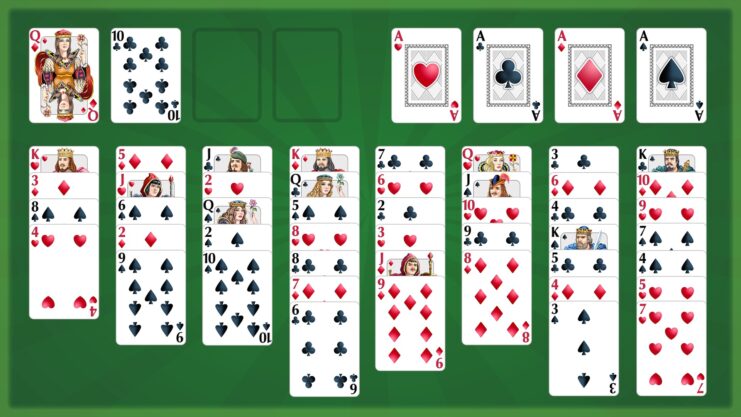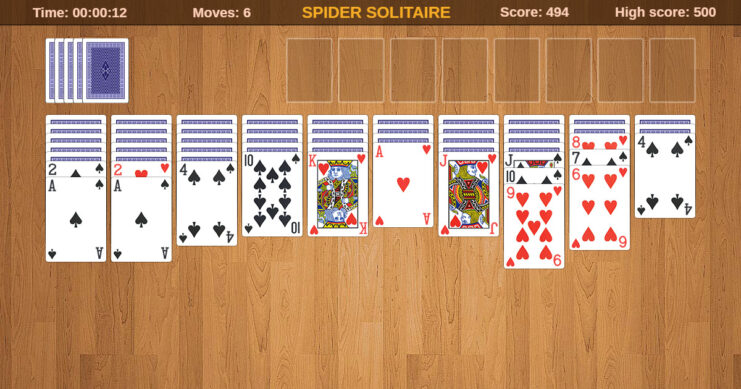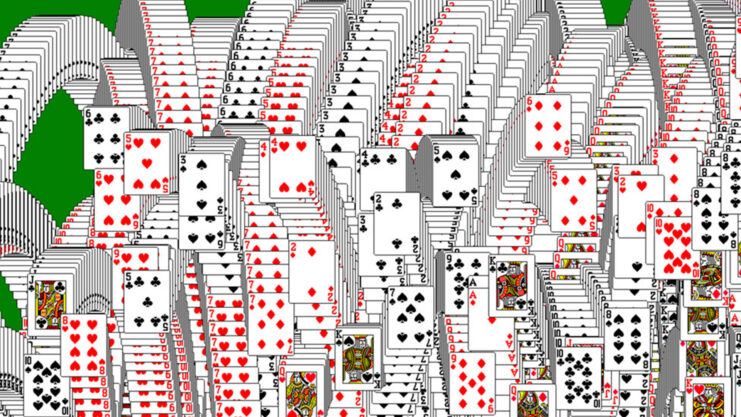Freecell Solitaire is a popular card game that has been around for decades, providing endless hours of entertainment and mental stimulation for players of all ages. It is a unique variation of the classic solitaire game, which is also known as Patience in some parts of the world. Freecell Solitaire is a single-player game that requires strategic thinking, planning, and a bit of luck to successfully complete. The game has gained widespread popularity due to its inclusion in various computer operating systems, most notably Microsoft Windows, which has introduced millions of people to this addictive pastime.
The objective of Freecell Solitaire is to build four foundation piles, one for each suit, in ascending order from Ace to King. The game is played with a standard 52-card deck, and the tableau consists of eight columns of cards, with the first four columns containing seven cards each and the remaining four columns containing six cards each. The game also features four “freecells,” which are essentially empty spaces that can be used to temporarily store cards during gameplay.
Rules

The rules of Freecell Solitaire are relatively simple, but mastering the game can be quite challenging. To begin, the player must move cards between the tableau columns, building them in descending order and alternating colors (red and black). For example, a black 6 can be placed on a red 7, and a red 5 can be placed on a black 6. The player can also move cards to the freecells, but each freecell can only hold one card at a time. The ultimate goal is to move all the cards to the foundation piles, which must be built in ascending order and by suit.
One of the key aspects of Freecell Solitaire that sets it apart from other solitaire games is the strategic use of the freecells. These empty spaces provide the player with additional flexibility when it comes to moving cards around the tableau. However, using the freecells effectively requires careful planning and foresight, as filling them up too quickly can lead to a dead-end situation where no further moves are possible.
Another unique feature of Freecell Solitaire is that, unlike many other solitaire games, it is almost always possible to win. In fact, it is estimated that over 99% of Freecell games are solvable, which means that with the right strategy and a bit of patience, players can achieve victory in nearly every game they play. This high win rate is one of the reasons why Freecell Solitaire has become so popular, as it provides a satisfying challenge without being overly frustrating.
History and variations
Over the years, Freecell Solitaire has evolved and expanded, with numerous variations and adaptations being developed. Some of these variations include Baker’s Game, which is considered the precursor to Freecell Solitaire, and Seahaven Towers, which adds additional rules and complexity to the game. There are also countless computer and mobile app versions of Freecell Solitaire available, each with their own unique features and gameplay options. A game described by amateur mathematician Martin Gardener is known as Baker’s Game. It appears to be the primary precursor of the well-known FreeCell game. In contrast to FreeCell, where cards are built in sequences of alternating colors, Baker’s Game builds cards according to suit.
The game was first published by Martin Gardener in Scientific American’s Mathematical Games column. He describes how:

C. L. Baker, who was formerly a senior employee in the Rand Corporation’s computer sciences division, recently brought to my attention a little-known solitaire game that he discovered could be simplified to offer a never-ending supply of captivating combinatorial puzzles. Baker learnt how to play the game from his father, who had learned it from an British national in the 1920s. While the initial pattern is selected by chance, it varies from most solitaire games in that the player has complete knowledge once the cards have been set. Each starting arrangement can therefore be solved or not, making it a thrilling task to find a solution.
As a result, the fact that the game might exist in various combinations was a distinguishing element of it when Gardener first introduced it. As you might assume, he was interested in the “puzzle” part of the game. According to him, “Baker’s happy discovery was that taking one, two, or three suits out of the entire deck results in games of ‘lower order.'” The cards are dealt into seven columns for the three-suit, or order-3, game, and there are three P cells.
How to play?

One of the best ways to enjoy Freecell Solitaire is by playing this website, which offers a wide variety of options for players of all skill levels. Whether you are a seasoned Freecell Solitaire expert or a complete beginner, you are sure to find a game that suits your preferences and provides an enjoyable and engaging experience.
As with any card game, practice is key when it comes to improving your Freecell Solitaire skills. The more you play, the better you will become at recognizing patterns and developing effective strategies for moving cards around the tableau and making use of the freecells. Additionally, there are numerous online resources, such as strategy guides and tutorials, that can help you learn more about the game and refine your techniques.
In conclusion, Freecell Solitaire is a captivating and challenging card game that has stood the test of time. Its unique gameplay mechanics, high win rate, and countless variations have made it a favorite among solitaire enthusiasts and casual gamers alike. Looking for an alternative? Try a game of gin rummy here. Whether you are looking to unwind after a long day, exercise your brain, or simply pass the time, Freecell Solitaire is a fantastic option that is sure to provide hours of entertainment and mental stimulation. So, grab a deck of cards or head over to your favorite website to play some Freecell Solitaire, and get ready to embark on a journey of strategy, skill, and, most importantly, fun.

